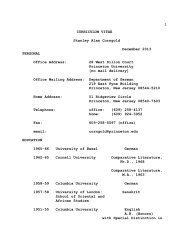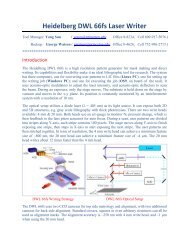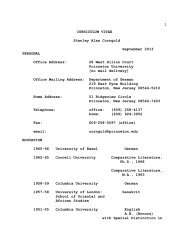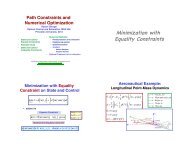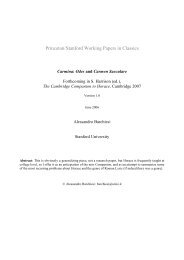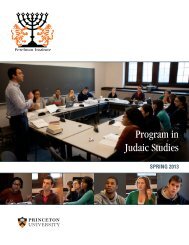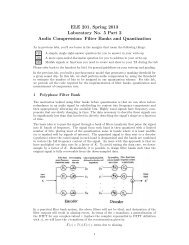The Pre-Roe Pro-Life Movement in Minnesota and New York
The Pre-Roe Pro-Life Movement in Minnesota and New York
The Pre-Roe Pro-Life Movement in Minnesota and New York
Create successful ePaper yourself
Turn your PDF publications into a flip-book with our unique Google optimized e-Paper software.
from the Great Depression <strong>in</strong> its section on poverty. 11 From the graphic to the<br />
sentimental, these photographs triggered powerful emotions: discomfort, disgust, <strong>and</strong><br />
sympathy. MCLTP felt that advances <strong>in</strong> medic<strong>in</strong>e <strong>and</strong> genetics necessitated abortion law<br />
reform; it therefore distributed literature on recent advances <strong>in</strong> medical procedures to<br />
persuade M<strong>in</strong>nesotans that exist<strong>in</strong>g abortion restrictions were dangerously out of date.<br />
<strong>The</strong> pamphlets focused on the hazards of x-ray radiation, halluc<strong>in</strong>ogens, <strong>and</strong> rubella<br />
(German measles) to the fetus, <strong>and</strong> the genetics advancements that facilitated the prenatal<br />
detection of those defects. 12<br />
MCCL, formed soon after MCLTP, would directly respond<br />
to these arguments <strong>in</strong> its publications <strong>in</strong> the late 60s <strong>and</strong> early 70s.<br />
Given the pro-abortion/pro-choice debate today is often associated with women’s<br />
rights <strong>and</strong> medical reason<strong>in</strong>g, MCLTP’s focus on morality as an argumentative<br />
framework is strik<strong>in</strong>g. 13<br />
While anti-abortion sympathizers relied heavily on the morality<br />
of preserv<strong>in</strong>g the life of the fetus, MCLTP <strong>in</strong>stead used morality to expla<strong>in</strong> the<br />
<strong>in</strong>sensitivity of the anti-abortion camp itself. <strong>The</strong>y argued that a woman could have<br />
respect for human life <strong>in</strong> decid<strong>in</strong>g not to br<strong>in</strong>g a child <strong>in</strong>to the world, unable to provide a<br />
rich, happy life for him or her. Further, <strong>in</strong> response to those who deemed abortion<br />
murder, MCLTP simply avoided a full discussion of the matter, stat<strong>in</strong>g the fetus is just<br />
“flesh, cells, organs, bones, <strong>and</strong> tissues,” 14 not a human be<strong>in</strong>g. MCLTP argued, by<br />
abort<strong>in</strong>g a fetus, a mother was not kill<strong>in</strong>g a human life, but rather remov<strong>in</strong>g parts – flesh<br />
<strong>and</strong> bones – of a potential one. This response <strong>in</strong>volved <strong>and</strong> fused both medical <strong>and</strong> moral<br />
discourse, used by all sides of the abortion debate. This <strong>in</strong> fact represented a turn<strong>in</strong>g<br />
11 Ibid.<br />
12 Ibid.<br />
13 Ibid.<br />
14 Ibid.<br />
26




